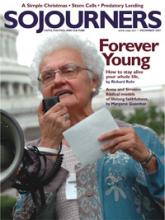After less than a year of violin lessons, I am already reaping the rewards of music training. Before my instruction, I didn’t know the difference between Brahms and Beethoven. Now, as a classically trained musician, I know that Beethoven has more letters than Brahms, not to mention two more syllables.
Despite this newfound knowledge and confidence, I was ill-prepared to hear it was time for my first public recital. This ludicrous suggestion, monstrous in its presumptiveness, was made by a madman who we shall call, simply, The Violin Teacher.
Recovering speech, I asked if “Mary Had a Little Lamb,” played very slowly, would be acceptable for my debut. The fiend turned, a sadistic twinkle in his eye—if, in fact, fiends can twinkle—and placed two pages on the music stand. It was “Concerto No. 5,” by Friedrich Seitz, a German composer who suffered from a unique form of dementia, the symptoms of which include putting excessive numbers of notes on a page and, having done so, putting them REAL close together.
(And what’s the deal with using numbers instead of names for classical pieces? Was Beethoven so exhausted after composing his masterpiece that all he had left was “Okay, the last one was ‘Symphony No. 4,’ so I’ll call this one, um, ‘No. 5’”? Why not something evocative, like “Winter’s Morn is a Breakin’ Over a Mist-Shrouded Lake,” or “My Achy Breaky Hearth”? Or, in the case of Seitz’s “Concerto No. 5,” “Tchyeah, Like You Could Play This.”)
Read the Full Article
